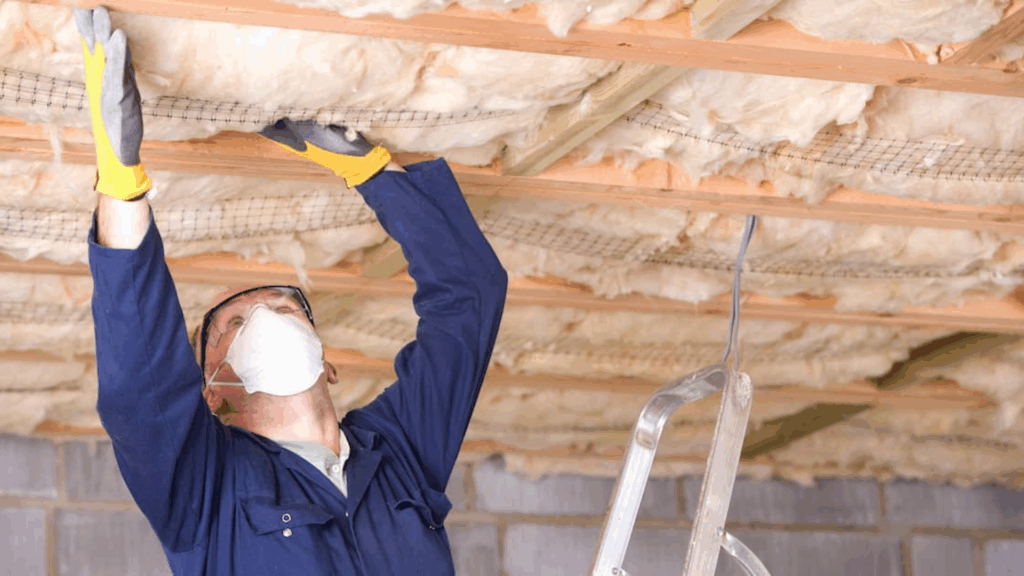Insulation plays a crucial role in keeping your home comfortable and energy-efficient, but how long does it actually last? Many homeowners wonder when they might need to replace it.
The truth is, insulation can last for years, but various factors can influence its lifespan.
If you’re noticing higher energy bills or uncomfortable temperatures in your home, it might be time to check your insulation. I’m here to help you understand how long insulation lasts and when it needs replacing.
You’ll learn about the common types of insulation, the factors that can reduce its life, and the signs that indicate it’s time for a change.
Trust me, knowing these details will help you make smart choices for your home’s comfort and energy efficiency. By the end, you’ll know exactly what steps to take to keep your home running smoothly.
Let’s get started!
What Is Insulation and Why Does It Matter?

Insulation is a material that helps keep your home warm in the winter and cool in the summer. It works by slowing down the flow of heat, preventing it from escaping in colder months or entering when it’s hot outside.
Think of it like a cozy blanket for your home, helping to maintain a comfortable temperature all year round.
Having good insulation in your walls, attic, and floors can save you money by lowering your energy bills. Without it, your heating and cooling systems have to work harder, which means higher energy costs.
Insulation also helps with noise reduction, keeps drafts out, and prevents moisture build-up, which could lead to mold or other damage.
In short, insulation boosts your home’s comfort and efficiency, so it’s important to maintain it for the long haul.
Typical Lifespan of Common Insulation Materials
Different types of insulation materials have varying lifespans depending on factors like moisture, temperature, and installation quality. Knowing how long each material lasts can help you plan for maintenance or replacement.
1. Fiberglass Insulation
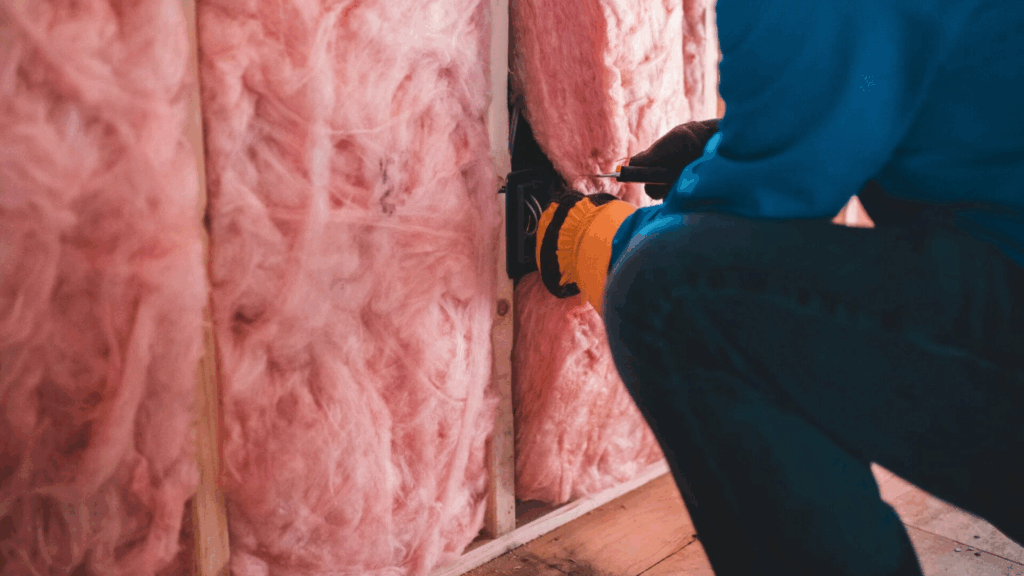
Fiberglass insulation is one of the most common types found in homes. It’s made of tiny glass fibers and is often used in attics, walls, and floors. Fiberglass can last up to 80 years or more if kept dry and in good condition.
However, it can lose its effectiveness over time if it gets compressed or exposed to moisture.
Over time, this material may settle and lose some of its ability to trap heat. It’s important to check for any damage, as moisture can cause it to mold or break down.
2. Cellulose Insulation
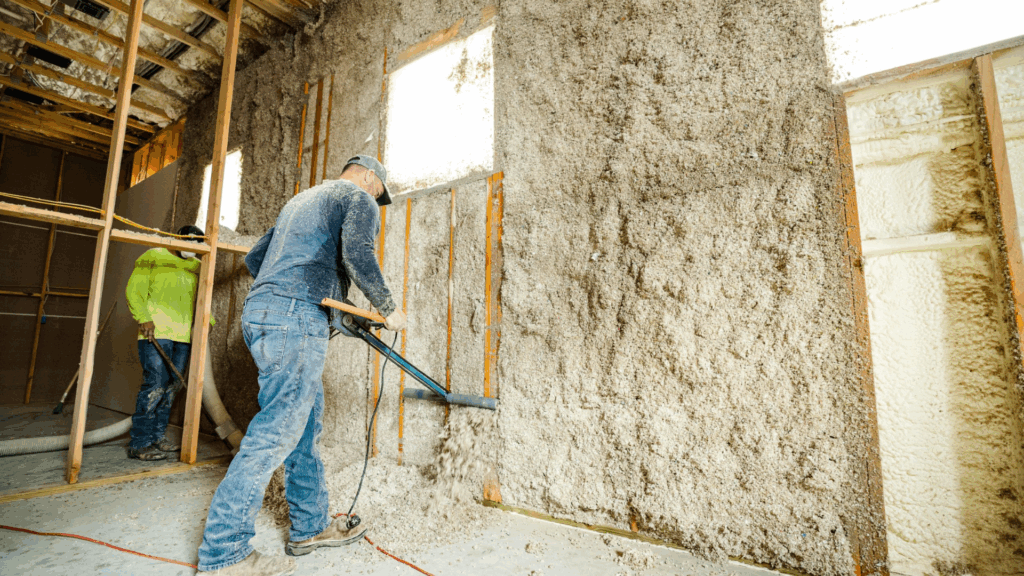
Cellulose insulation is made from recycled paper products and treated with fire retardants. It’s an eco-friendly option and works well in walls and attics. Cellulose can last up to 20-30 years.
However, its lifespan is greatly affected by moisture, as it can absorb water and start to degrade. If it gets too wet, it can lose its insulating properties and lead to mold growth.
Regular inspections are important to keep cellulose in good shape. It’s also important to check for settling, which can reduce its overall effectiveness.
3. Spray Foam Insulation
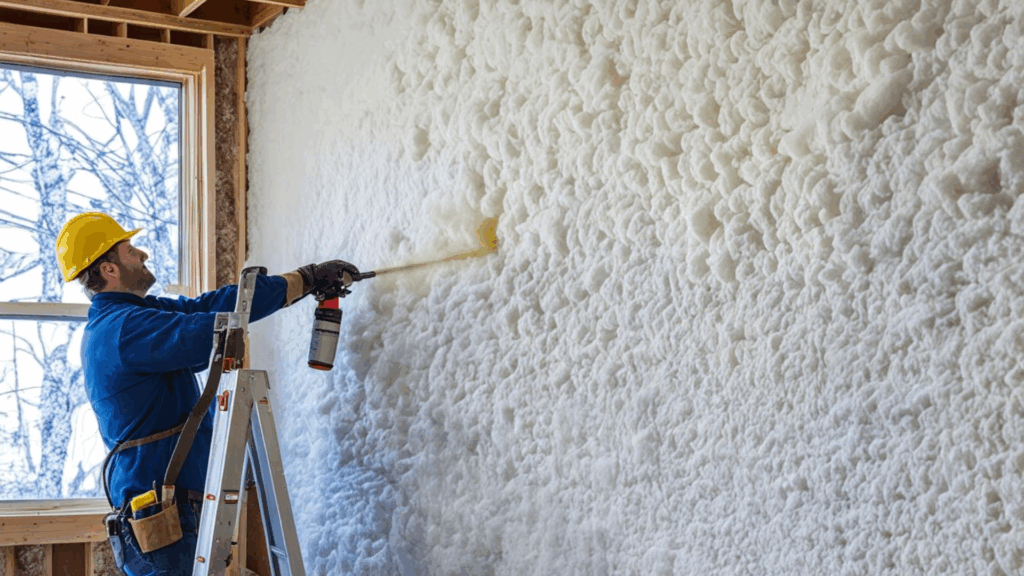
Spray foam insulation is a newer option that expands after being sprayed into place. It creates a tight seal and is great for preventing air leaks.
This type of insulation can last up to 80 years or more, but its longevity depends on the quality of installation and conditions. Over time, it may start to crack or shrink, especially if exposed to extreme temperatures or moisture.
If it’s properly installed and maintained, spray foam insulation can keep your home comfortable and energy-efficient for many years.
4. Mineral Wool or Rock Wool Insulation

Mineral wool, also known as rock wool, is made from natural rocks and minerals. It’s a fire-resistant, durable option often used in areas like basements or exterior walls. Mineral wool can last up to 50 years or more.
It’s highly resistant to moisture, so it doesn’t absorb water, which helps prevent mold growth. However, it can still be damaged if exposed to extreme weather or physical impact.
Mineral wool is a great, long-lasting choice, but like all materials, it should be checked regularly for any wear or damage.
5. Foam Board Insulation
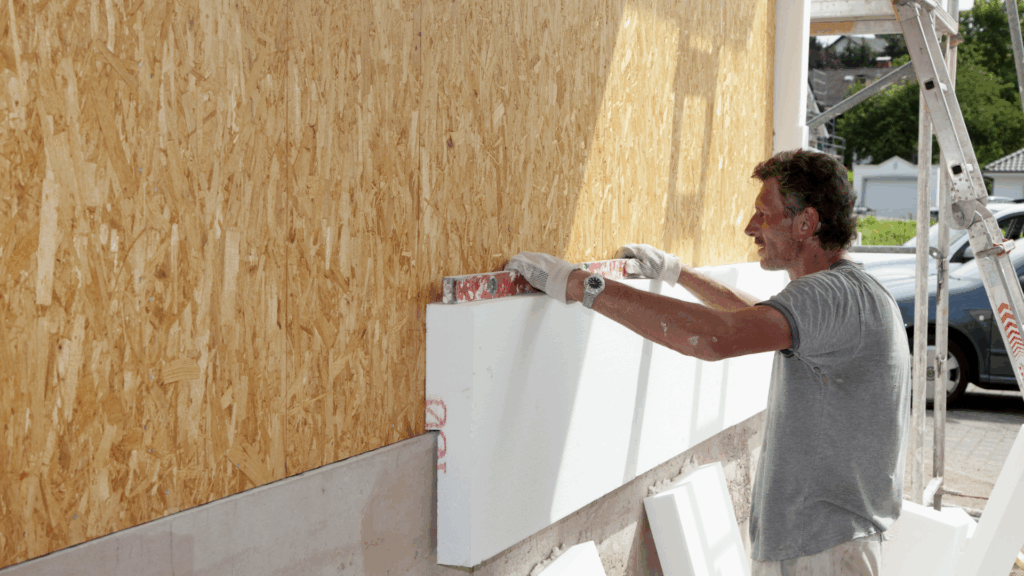
Foam board insulation is made of rigid foam panels, commonly used in basements, foundations, and roofs. It lasts about 20-30 years but is prone to damage from moisture or pests.
The foam itself is resistant to water, but if it’s exposed to long-term wet conditions, it can degrade.
When installed correctly, foam board can help reduce energy costs and keep your home comfortable for many years. Regular checks for damage will help maintain its performance.
Key Factors that Affect Insulation Lifespan
Several factors can impact how long your insulation lasts, from moisture to poor installation. Understanding these factors can help you protect your insulation and extend its effectiveness.
- Exposure to Moisture: Moisture can damage insulation, reducing its effectiveness and causing mold. Prevent leaks and ensure proper ventilation to protect insulation from water damage.
- Settling and Compression: Over time, insulation can settle or compress, leaving gaps. This reduces its ability to trap heat, so regular checks are important.
- Pests and Rodents: Rodents and insects can damage insulation by chewing through it or nesting. Sealing entry points and pest control can prevent this.
- Environmental Conditions: Extreme temperatures, humidity, and climate changes can cause insulation to degrade. Choosing the right material for your area helps improve its lifespan.
- Installation Quality: Proper installation ensures insulation covers all areas and avoids gaps. Poor installation can reduce effectiveness and shorten the lifespan. Always opt for professional installation when possible.
Signs that Your Insulation May Need Replacing

Over time, insulation can lose its effectiveness. Knowing the signs that indicate it’s time for replacement can help you keep your home energy-efficient and comfortable. These are some key signs to watch for.
- Higher Energy Bills: Rising energy costs may mean your insulation isn’t working efficiently.
- Cold or Hot Spots: Uneven temperatures may indicate that your insulation has settled or is no longer effective.
- Visible Damage: Damp, compressed, or damaged insulation may need replacement to keep it efficient.
- Moisture or Mold: Moisture or mold on insulation means it needs replacing to prevent further damage.
- Pest Infestation: Rodents or insects damaging insulation may reduce its ability to function properly.
- Old or Settled Insulation: If your insulation is over 20 years old or has settled, it may need replacement to improve efficiency.
How to Maximize Your Insulation’s Lifespan?

Taking care of your insulation can help extend its life and keep your home energy-efficient. These are some simple steps to ensure your insulation lasts as long as possible.
- Regular Inspections: Check insulation annually for signs of damage, moisture, or pests to catch problems early.
- Seal Leaks: Ensure your home is properly sealed to prevent air leaks that can reduce insulation efficiency.
- Control Moisture: Use dehumidifiers or improve ventilation to keep areas like basements and attics dry.
- Keep Pests Out: Seal entry points and consider professional pest control to prevent damage from insects.
- Proper Ventilation: Ensure proper airflow in attics and crawl spaces to prevent heat damage to insulation.
- Reinstall if Necessary: If insulation has settled or is damaged, adding more insulation can help restore its effectiveness.
Conclusion
Keeping your insulation in good condition is essential for a comfortable, energy-efficient home. Over time, various factors like moisture, pests, and wear and tear can reduce its effectiveness.
Spotting signs that your insulation needs attention can help prevent higher energy costs and discomfort.
I hope this guide has helped you understand insulation’s typical lifespan and when it’s time for a replacement. Regularly checking and fixing insulation can extend its life and keep your home in great shape.
Remember, proper maintenance and timely repairs can make a big difference in your home’s energy efficiency, comfort, and overall health.
Taking a little time now can save you a lot in the future. Get started today by inspecting your insulation or reaching out to a professional for advice on keeping your home efficient and comfortable!

